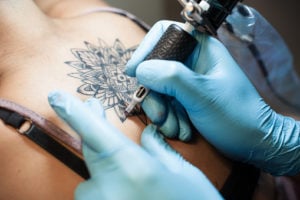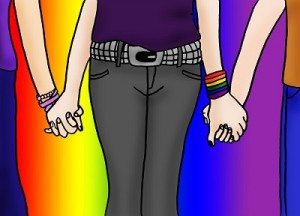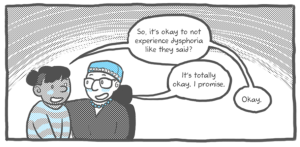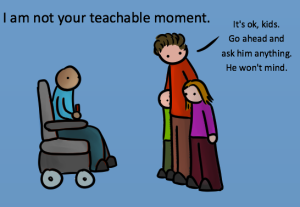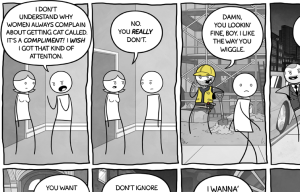Originally published on Bullshitist and republished here with permission.
My ex-wife taught herself how to tattoo using her own legs for practice. And then her arm, the left one, because she could reach it with the tattoo gun in her right hand.
She self-adorned with letters, numbers, old school images, like Sailor Jerry’s stuff, and then images with more shading, color, and nuance.
She was already a visual artist, with art degrees and everything. This was just another medium and her skin was a handy canvas. Her legs, in particular, became a strange jumble of images.
I don’t think it even occurred to her that this was odd until she went to Las Vegas and was walking around in shorts for a week among a bunch of strangers.
Hers was not a usual relationship to tattoos.
Some people, like my ex-wife, just emblazon themselves with images they like – images with little meaning to them. But most, it seems, want to have some connection to the image.
The tattoos are an ongoing graphic diary of their lives. Or they represent a series of commemorations.
The stories people tell about their tattoos and what meaning they make of them have become commonplace forms of communication among people under age forty. The tattooed are a growing in-group, no longer limited as a deviant fringe group.
People trade tattoo stories in supermarkets and on buses, waiting for their kids at school, and changing clothes at the gym. It used to be impolite to ask about someone’s tattoo, like you should back off and not ask “that kind of person” something so obviously personal.
Now people use compliments about “the artwork” to start conversations, or even to initiate touching. It’s an intimacy, a flirtation at times. And it sure seems like a lot of folks who have tattoos want to discuss them.
There are also common stories people tell about others’ tattoos.
We pity the really bad ones, the misspellings, the Japanese kanji that was supposed to say “strength” and says “tofu” instead. People pity women’s sex-reference tattoos in a different way. The “curves ahead” sign on a woman’s hip, a cat adorning a shaved pubic mound.
Men’s impromptu tattoos are still seen as a sign of wild abandon, while women’s are seen as bad judgment, or an advertisement of loose morals (which somehow is still synonymous with an interest in sex).
People also like to discuss whether or not someone’s entitled to have the tattoos they have.
It’s fickle, though, to critique a Hawaiian pattern on a tourist’s arm, but fail to critique some of the more “bad-ass” renderings of weapons by those who haven’t seen combat or even religious symbols by those who aren’t devout.
My friend has a large radiant Mother Mary on her forearm – think of the image of Mary on devotional candles in Mexico. Her version, however, has pronounced cleavage. She’s a sexy Mary. Or maybe kinky Mary, in her religious robes.
My friend isn’t Mexican and not Catholic, but maybe the image would be all the more odd if she were one of those things or both. In any case, no one’s ever accused her of cultural appropriation, though the tattoo is certainly a form of that.
Sometimes, planning a tattoo can take the place of the actual rite of passage, or depth of connection, or sense of responsibility one wishes to commemorate.
Many guys with tattoos commemorating their children are not paying child support on time or accustomed to leaving work to pick up a sick child at school.
As much as the wedding ring has become a symbol of commitment and sacrifice, the relationship can still be a mess. The tattoo is a thing that can be purchased and once the pain of placement is endured, the relationship with its prompting event is just history.
The story marker allows for the public display of accomplishments that may or may not have required lasting transformation in one’s life.
I’m not arguing for or against tattoos (or any other form of body modification) rather questioning what might prompt actual commitment and serious reflection, if not painful (often prideful) marks on our flesh-bodies.
I have another friend who recently announced her desire to get a new tattoo (she already has a few) to commemorate her decade of living with chronic illness. She wants to commemorate her strength, survival, and warrior-nature.
I’m happy that this will mean something positive for her, not only a celebration of strength but a source of it as well. I’m glad for her tenacity.
And then I was puzzled by what she was considering – images of strength and bravery from a culture she had visited for a few months last year.
As much as she loved that trip, and it nourished her in positive ways, I wondered about whether images from that culture actually serve the purpose of committing to a positivity that’s more than skin-deep.
Sure, it’s easy to turn away from images in one’s own culture. They’re both personally laden and potentially boring. In the same way that people often find religions other than the ones in which they were raised more “pure,” it may be easy to see “exotic” images in a better light.
The question of cultural appropriation is more important in some instances, too.
When a culture has been colonized and those who look like the colonizer feel entitled to use their images, there’s reason for concern.
Perhaps it’s a mark of maturity – or at least impulse control – to recognize that we needn’t choose everything we like, simply because it’s available to us.
Perhaps maturity comes from returning to what one has been given culturally with kindness and interest, rather than seeking outside. When we grapple with the difficult and inane, we may ultimately find peace with what previously vexed us.
The gravity of one’s interrelationship with culture and appropriation and privilege can continue the mission of becoming a fighter or a sage or a traveler or whatever the thing is into which one wishes to evolve.
Rather than defending our decisions, we find it within ourselves to listen for others’ meaning, too.
Mostly, I just wanted my friend’s journey toward her own strength and well-being to be true – something more than an imagined connection with mythical strength, translated via magical thinking and an artist’s needle into a wearable talisman.
I hope my friend finds strength itself, not just a symbol of it. Maybe that’s too much to expect from a tattoo. Maybe that’s the point.
Really, whatever she chooses will be fine. It’s just skin. The tattoo will be both a reminder and a lesson, as with all the body experiences. It’ll be something that has a meaning to her and that meaning may or may not be shared by those who view it.
I mean, we were “dating” in the modern electronic sense, but yeah, not really “involved” in the traditional, depth-of-connection sense at all. I glibly countered that by saying no. Considering her relationship with tattoos, it wasn’t weird at all. Just a picture. Look, I said, showing friends a photo, I’m right next to a bird, and the number six.
My friends feared the tattoo was proof of her “falling too fast” or perhaps proof of mental instability.
What is sometimes seen as a commitment is really just a symbol of commitment, in much the same way, a grand wedding doesn’t always herald a stable marriage. Our relationships to our bodies – and their illustrations – can similarly be profound or skin-deep.
It turned out that my own relationship with the ex-wife, was in fact an example of how vows can be just words – even when they speak of a long-term bond. As tattoos can be, the marriage was but a fleeting image, despite the legal and emotional process heralding a deeper commitment than mere dating.
We fool ourselves, if we believe these symbols can replace deep, transformative experiences that change us, and continue prompting us to evolve.
Something more is needed than a commemoration like a wedding or a tattoo.
Strength, commitment and connection require attention and constant renewal. They’re visible in a different way and usually don’t require an onlooker to ask, “So what’s that mean?”
They already know.
[do_widget id=’text-101′]
Kimberly Dark is a writer, sociologist, and raconteur working to reveal the hidden architecture of everyday life, one clever story, poem, and essay at a time. Learn more at www.kimberlydark.com.
Search our 3000+ articles!
Read our articles about:
Our online racial justice training
Used by hundreds of universities, non-profits, and businesses.
Click to learn more


